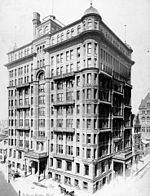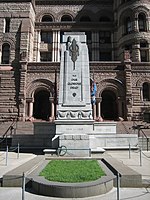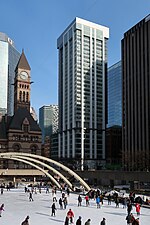Economic Club of Canada

The Economic Club of Canada is a non-partisan speaker’s forum based in Canada, and modelled on American societies such as the Economic Club of New York, or the Economic Club of Pittsburgh, although the latter organizations are not-for-profit. The Canadian organization meets three times a week and provides a platform for policy makers and business leaders. Notable former speakers have included John Tory, Bill Clinton, Kathleen Wynne, Mike Savage and John McCallum. It markets itself as a business elite organization that can turn events around quickly, thus making its events more timely and newsworthy. Members are drawn from the business, industry and finance sectors. Speeches are typically held in the modern hotels in various cities over the lunch hour. Tickets to the events can be individually sold or by table to the companies, organizations or private members.
Excerpt from the Wikipedia article Economic Club of Canada (License: CC BY-SA 3.0, Authors, Images).Economic Club of Canada
Queen Street West, Old Toronto
Geographical coordinates (GPS) Address Phone number Website Nearby Places Show on map
Geographical coordinates (GPS)
| Latitude | Longitude |
|---|---|
| N 43.651038888889 ° | E -79.382536111111 ° |
Address
Sheraton Centre Toronto Hotel
Queen Street West 123
M5H 2L3 Old Toronto
Ontario, Canada
Open on Google Maps










